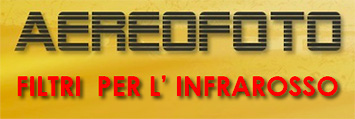
Not only the Mayans, but also the North American drank chocolate as early as 1000 AD. The discovery suggests the existence of trade between North and Central America.
The chocolate arrived in North America long before the arrival of European colonialists. The show traces of cocoa found on shards of ceramic containers, some dating back 1000 years after Christ, the first ever found outside the borders of Mexico. The pottery was used by Native Americans to drink this beverage during ceremonies and rituals. The discovery, published in "Proceedings of the National Academy of Sciences (PNAS), was made by the team of Patricia Crown, an archaeologist at the University of New Mexico, the site of Pueblo Bonito in Chaco Canyon.
Here, between the ninth and twelfth century AD, there was a camp of about a thousand Anasazi, the native people of North America. To arouse the interest of researchers, who for eight years studying these containers was their similarity with the containers of Maya peoples of Central America, who used this type of vases decorated during the ritual to drink a beverage made of cacao, made with cocoa beans, corn, red pepper and water. Test results have confirmed the suspicions of the fragments analyzed vases dated between 1000 and 1125 AD, were found traces of a natural alkaloid found in cocoa plants, the theobromine.
But how did the inhabitants of Chaco Canyon to have cocoa beans in the desert, almost 2000 kilometers from the nearest plantations? According to Crown, the discovery suggests that chocolate was imported into North America through a trade route that ran from New Mexico to Central America, long before European colonialism.
VERSIONE ITALIANA
Non solo i Maya, ma anche i nordamericani bevevano la cioccolata già nel 1.000 dopo Cristo. La scoperta suggerisce l'esistenza di scambi commerciali tra Nord e Centro America
La cioccolata giunse nel Nord America ben prima dell'arrivo dei colonialisti europei. Lo rivelano le tracce di cacao trovate sui cocci di alcuni contenitori di ceramica risalenti a 1.000 anni dopo Cristo, le prime mai rinvenute fuori dai confini del Messico. Il vasellame sarebbe stato usato dai nativi americani per bere questa bevanda durante cerimonie e rituali. La scoperta, pubblicata su "Proceedings of the National Academy of Sciences" (Pnas), è stata fatta dal team di Patricia Crown, archeologa dell'Università del Nuovo Messico, nel sito di Pueblo Bonito nel Canyon Chaco.
Qui, tra IX e il XII secolo dopo Cristo, si trovava un accampamento di circa mille Anasazi, popolo nativo del Nord America. A destare l'interesse dei ricercatori, che da otto anni studiano questi recipienti, è stata la loro somiglianza con i contenitori delle popolazioni Maya del Centro America, che usavano questo tipo di vasi decorati durante i rituali per bere una bevanda a base di cacao, fatta con semi di cacao, mais, peperoncino e acqua. Le analisi hanno confermato i sospetti: sui frammenti dei vasi analizzati, datati tra il 1.000 e il 1.125 dopo Cristo, sono state trovate tracce di un alcaloide naturale presente nelle piante di cacao, la teobromina.
Ma come facevano gli abitanti del Canyon Chaco ad avere i semi di cacao in pieno deserto, a quasi 2.000 chilometri dalle più vicine piantagioni? Secondo Crown, la scoperta lascia supporre che il cioccolato fosse importato nel Nord America attraverso una via commerciale che correva dal Nuovo Messico fino all'America centrale, ben prima del colonialismo europeo.






di Michael A. Cremo, Richard L. Thompson2. Archeologia Misterica
di Luc Bürgin3. Archeologia dell'impossibile
di Volterri Roberto4. Archeologia eretica
di Luc Bürgin5. Il libro degli antichi misteri
di Reinhard Habeck6. Rennes-le-Château e il mistero dell'abbazia di Carol
di Roberto Volterri, Alessandro Piana7. Il mistero delle piramidi lombarde
di Vincenzo Di Gregorio8. Le dee viventi
di Marija Gimbutas9. Come ho trovato l'arca di Noè
di Angelo Palego10. Navi e marinai dell'antichità
di Lionel Casson

ARCHEOLOGIA BIBLICA
ECCEZIONALE RITROVAMENTO IN UN TUNNEL SEGRETO IN MESSICOARCHEOLOGIA BIBLICA
CIMITERO DI ANFORE IN DUE NAVI ROMANE NELLE EOLIEARCHEOLOGIA BIBLICA
SCOPERTI VASI DI ARGILLA CRUDI A POMPEIPALEONTOLOGIA
IL GIGANTE DI ATACAMA: UN ALTRO GEOGLIFO CHE SFIDA LA NOSTRA COMPRENSIONE DEL PASSATOARCHEOLOGIA BIBLICA
TROVATA AD ORVIETO LA TESTA DEL DIO DEGLI ETRUSCHIPALEONTOLOGIA
IL MISTERO DELLE TORRI SEGRETE DELL'HIMALAYAARCHEOLOGIA BIBLICA
UNO SCAVO ILLEGALE SCOPRE UN TEMPIO DI THUTMOSE IIIPALEONTOLOGIA
LA BUFALA CHE GESU' FU PADRE E MARITOPALEONTOLOGIA
IL "SEME MAGNETICO" CHE DIEDE VIA ALLA VITA VEGETALE SULLA TERRAPALEONTOLOGIA
TRAPPOLE PER DEMONI SCOPERTE IN INGHILTERRA

















